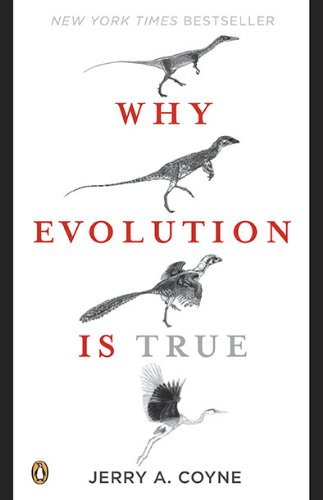Mating Strategies of Males and Females
A vivid demonstration of this difference can be seen by looking up the record number of children sired by a human female versus a male. If you were to guess the maximum number of children that a woman could produce in a lifetime, you’d probably say around fifteen. Guess again. The Guinness Book of World Records gives the “official” record number of children for a woman as sixty-nine, produced by an eighteenth century Russian peasant. In twenty-seven pregnancies between 1725 and 1745, she had sixteen pairs of twins, seven sets of triplets, and four sets of quadruplets. (She presumably had some physiological or genetic predisposition to multiple births.) One weeps for this belabored woman, but her record is far surpassed by that of a male, one Mulai Ismail (1646–1727), an emperor of Morocco. Ismail was reported by Guinness as having fathered “at least 342 daughters and 525 sons, and by 1721 he was reputed to have 700 male descendants.” Even at these extremes, then, males outstrip females more than tenfold.
The evolutionary difference between males and females is a matter of differential investment—investment in expensive eggs versus cheap sperm, investment in pregnancy (when females retain and nourish the fertilized eggs), and investment in parental care in the many species in which females alone raise the young. For males, mating is cheap; for females it’s expensive. For males, a mating costs only a small dose of sperm; for females it costs much more: the production of large, nutrientrich eggs and often a huge expenditure of energy and time. In more than 90 percent of mammal species, a male’s only investment in offspring is his sperm, for females provide all the parental care.
This asymmetry between males and females in potential numbers of mates and offspring leads to conflicting interests when it comes time to choose a mate. Males have little to lose by mating with a “substandard” female (say, one who is weak or sickly), because they can easily mate again, and repeatedly. Selection then favors genes that make a male promiscuous, relentlessly trying to mate with nearly any female. (Or any thing bearing the slightest resemblance to a female—male sage grouse, for instance, sometimes try to mate with piles of cow manure, and, as we learned earlier, some orchids get pollinated by luring randy male bees to copulate with their petals.)
Females are different. Because of their higher investment in eggs and offspring, their best tactic is to be picky rather than promiscuous. Females must make each opportunity count by choosing the best possible father to fertilize their limited number of eggs. They should therefore inspect potential mates very closely.
What this adds up to is that, in general, males must compete for females. Males should be promiscuous, females coy. The life of a male should be one of internecine conflict, constantly vying with his fellows for mates. The good males, either more attractive or more vigorous, will often secure a large number of mates (they will presumably be preferred by more females, too), while substandard males go unmated. Almost all females, on the other hand, will eventually find mates. Since every male is competing for them, their distribution of mating success will be more even.
Notes:
A Great summary of the differences between them evolutionarily.
Folksonomies: evolution sex sexual selection gender
Taxonomies:
/science/biology/breeding (0.631073)
/health and fitness/disease/infertility (0.455216)
/society/sex (0.442650)
Keywords:
females (0.963868 (positive:0.111487)), males (0.815880 (positive:0.022615)), Females A Great (0.675658 (positive:0.552024)), parental care (0.620133 (negative:-0.233358)), record number (0.614671 (neutral:0.000000)), substandard males (0.606739 (negative:-0.409910)), good males (0.596182 (positive:0.402034)), females. Males (0.590493 (negative:-0.270158)), female—male sage grouse (0.586203 (negative:-0.293921)), randy male bees (0.585179 (positive:0.221933)), mates (0.538313 (positive:0.194798)), eggs (0.533768 (negative:-0.005633)), potential mates (0.529876 (neutral:0.000000)), expensive eggs (0.529225 (negative:-0.687658)), vivid demonstration (0.526100 (positive:0.831543)), genetic predisposition (0.525921 (negative:-0.397114)), Russian peasant (0.523860 (neutral:0.000000)), Mulai Ismail (0.523495 (neutral:0.000000)), multiple births (0.520389 (negative:-0.362785)), maximum number (0.520282 (neutral:0.000000)), Guinness Book (0.520005 (positive:0.348424)), human female (0.519170 (neutral:0.000000)), male descendants. (0.517435 (neutral:0.000000)), eighteenth century (0.517130 (neutral:0.000000)), World Records (0.516041 (positive:0.348424)), slightest resemblance (0.514312 (negative:-0.293921)), belabored woman (0.512442 (negative:-0.858816)), small dose (0.509802 (neutral:0.000000)), differential investment—investment (0.509374 (negative:-0.687658)), huge expenditure (0.508578 (neutral:0.000000))
Entities:
Mulai Ismail:Person (0.890137 (neutral:0.000000)), Morocco:Country (0.532285 (neutral:0.000000)), official:JobTitle (0.478665 (neutral:0.000000)), Guinness:Person (0.459596 (neutral:0.000000)), randy:Person (0.443896 (positive:0.221933)), 90 percent:Quantity (0.443896 (neutral:0.000000))
Concepts:
Reproduction (0.950166): dbpedia | freebase
Female (0.819337): dbpedia | freebase | opencyc
Sex (0.800460): dbpedia | freebase
Gender (0.735068): dbpedia | freebase
Woman (0.734587): dbpedia | freebase | opencyc
Spermatozoon (0.733140): dbpedia | freebase
Male (0.659303): dbpedia | freebase | opencyc
Gamete (0.648171): dbpedia | freebase | opencyc





